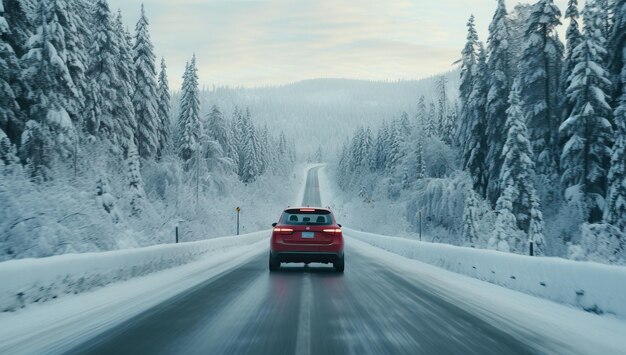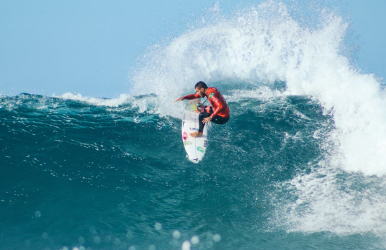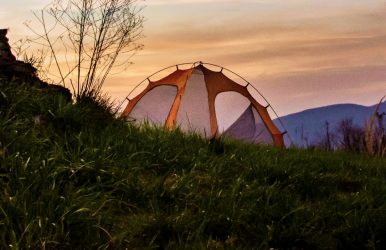6 Best Destinations For A Safari In Kenya
BY Abdul Aziz Jun 2, 2023
Kenya, located in East Africa, is renowned for its breathtaking landscapes, abundant wildlife, and incredible safari experiences. With a rich diversity of ecosystems, including vast savannahs, dense forests, and stunning coastal regions, Kenya offers an unparalleled opportunity to witness the wonders of nature from very close. If you are planning for a safari trip in Kenya, the first step would be to book your flight tickets, accommodation and get a visa. To make the visa process simpler, you can also apply online and get an evisa Kenya. You should then look for the best-guided tours with reputable safari operators to make the most of your safari adventure. They can customize your itinerary, provide knowledgeable guides, and ensure safety and comfort. It's also crucial to prioritize responsible and sustainable tourism practices, respecting wildlife and supporting local communities. Best time to Visit Kenya When planning your safari in Kenya, it's essential to consider the best time to visit. From June to October, the dry season is ideal for wildlife viewing as animals gather around water sources, and vegetation is less dense. The dry season in Kenya is generally considered the best time for wildlife viewing. With less rainfall, animals gather around water sources, making it easier to spot them. The vegetation is also less dense, providing clearer views. June and July are particularly popular months as they coincide with the Great Migration in the Maasai Mara, where millions of wildebeest, zebras, and other herbivores cross the Mara River. However, the wet season, from November to May, brings lush landscapes, newborn animals, and a plethora of birdlife. Best safari experience in Kenya Here’s a list of the six best destinations in Kenya that you should consider for an adventurous safari experience. 1. Maasai Mara National Reserve: Maasai Mara is perhaps Kenya's most famous wildlife reserve, if not in all of Africa. Known for its annual wildebeest migration, where millions of animals cross the Mara River, the reserve offers an awe-inspiring spectacle. Besides the migration, Maasai Mara boasts an impressive variety of wildlife, including lions, elephants, cheetahs, giraffes, and zebras. The vast open plains and rolling hills provide an ideal backdrop for game drives, hot air balloon safaris, and photography enthusiasts. Derive benefit from the avenue to communicate with the local Maasai people and learn about their vibrant culture and traditions 2. Amboseli National Park: Amboseli National Park is positioned at the hilltop of Mount Kilimanjaro, famous for its stunning views of Africa's highest peak. The park's vast grasslands are home to large herds of elephants known for their distinctive tusks. Besides elephants, Amboseli offers excellent wildlife sightings, including buffalo, zebras, giraffes, and various bird species. The park's unique landscape, with swamps, marshes, and acacia woodlands, provides a picturesque setting for photography enthusiasts. Remember to visit Observation Hill, which offers panoramic views of the entire park and the majestic Mount Kilimanjaro. 3. Tsavo National Park: Tsavo National Park, divided into Tsavo East and Tsavo West, is one of the largest wildlife sanctuaries in the world. Known for its dramatic landscapes and abundant wildlife, Tsavo offers a truly wild and untamed safari experience. Tsavo East is characterized by vast plains, ancient baobab trees, and the flowing Galana River, which attracts a variety of animals, including lions, elephants, zebras, and giraffes. Tsavo West is famous for its diverse terrain, including volcanic hills, dense forests, and the stunning Mzima Springs, where you can watch hippos and crocodiles underwater. For a unique experience, consider visiting the Sheldrick Wildlife Trust, an orphanage sanctuary for rhinos and elephants. 4. Samburu National Reserve: Samburu National Reserve offers a distinct and captivating safari experience in Kenya's northern region. The reserve is acknowledged for its rare wildlife species, including the "Samburu Special Five": the reticulated giraffe, Somali ostrich, Grevy's zebra, gerenuk, and beisa oryx. Additionally, Samburu is home to elephants, lions, cheetahs, and leopards. The Ewaso Ng'iro River flows through the reserve, attracting a wide range of wildlife, especially during the dry season. Samburu's rugged landscapes, with arid plains and rocky outcrops, create a unique and breathtaking setting for game drives and nature walks. 5. Lake Nakuru National Park: For bird lovers, Lake Nakuru National Park is a must-visit destination. Located around the picturesque Lake Nakuru, the park is a haven for bird species, including thousands of flamingos that flock to the alkaline lake. The park's diverse habitats, including grasslands, woodlands, and cliffs, provide a home for over 450 bird species. Apart from the stunning birdlife, Lake Nakuru National Park also houses numerous types of wildlife. The park is recognized for its endangered population of black and white rhinos, making it one of the esteemed destinations in Kenya to recognize these magnificent creatures. Additionally, you can encounter lions, leopards, buffalos, zebras, and giraffes during your safari adventures. The park's diverse habitats, including woodlands, grasslands, and acacia forests, support various animal and plant species, making each safari excursion a thrilling and rewarding experience. 6. Laikipia Plateau: The Laikipia Plateau offers a unique safari experience, known for its exclusive lodges and conservation-focused tourism. This vast area is home to a variety of wildlife, including the endangered Grevy's zebras, black rhinos, and reticulated giraffes. You can participate in game drives, walking safaris, and even visit local communities to learn about their traditional culture and conservation efforts. The Laikipia Plateau is located in central Kenya and offers a unique and off-the-beaten-path safari experience. It is a vast, privately owned area known for its conservation efforts and sustainable tourism practices. The region is characterized by a mix of open grasslands, rolling hills, rocky outcrops, and riverine forests, creating diverse habitats for a wide range of wildlife. Conclusion Kenya offers an incredible safari experience with its diverse landscapes, abundant wildlife, and rich cultural heritage. Whether you witness the grandeur of the Maasai Mara, the unique species of Samburu, or the birdlife of Lake Nakuru, each destination will leave you in awe of nature's wonders. Embark on a journey to Kenya and create lifelong memories of thrilling adventures. You can go on game drives, watch stunning sunsets, and have close encounters with majestic wildlife. The vastness of Tsavo National Parks, as well as the avian wonders of Lake Nakuru make its beauty extraordinary. A safari in Kenya promises to be a journey of discovery. It will immerse you in the untamed wonders of nature and leaving you with memories that will last a lifetime.













